This 1975 camera was the first 35mm with an integrated electronic flash, but is it all flash and no bang?
Another cool classic
Konica C35 EF
Camera: £6.27
Postage: £2.90
Total: £9.17
Automatic for the people
It has automatic exposure (it controls aperture and shutter speed) but since it has a manual film speed selector you can tweak it yourself a little if you’re feeling adventurous. It needs a small battery for the light meter and a couple of AAs which power the flash.
It has the now-common feature of locking the exposure when you half-press the shutter button so if you’re having trouble getting it to fire in the dark you can compose a shot against a brighter scene, then recompose.
Manual labour
The manual focus uses the common system of showing pictures indicating distance but it also includes measurements in feet and metres. The self timer is clockwork, the flash popup is on a spring and the winder and loading is all manual. Using it is easy and quick, you can see why it was a popular choice for walking around and snapping quick pictures. I didn’t use it much in the dark, but one benefit of it using AA batteries which are still common is that the flash isn’t too dim or bright as can often happen when using modern substitutes for discontinued batteries.
mouldy Old Film?
Kubrik BW400
(Ilford)
Cost: £5.95
Postage: £6.07
Expired: 1976
ISO: 400
Format/Type: BW negative
Exposures: 24
Processing: £1.99
Full Total: £14.01
Cost per shot: £0.58
My Rating: 7
This film is an interesting and unusual one. It was also pretty pricy and had to be shipped from Australia. I bought a three-pack of films called KABAOTTEMULSION from a guy who repairs and customises cameras, he’s Kaba Otto on Facebook, CameraOtaku on eBay and caparobertsan on Flickr.
The pack was a selection of black and white films respooled from old stock, this one used Ilford from 1976, rated at 400 ISO.
Now there are a few ways you can get what you might call a retro look:
Use old cameras
Well I use a lot of old cameras, and some of them actually take pretty crisp pictures while some are a little rougher around the edges. The Lomo cameras like the plastic ones excel at that. I wouldn’t say that the results are retro though, just lo-fi.
Use random old film
I’ve tried old film. Real, actual, old film that’s been left in cameras since the 70s, discontinued lines like Kodak 2475 and Foto 130 from the 80s that haven’t been stored well, and the brutal truth is that you’ll be lucky to get even a single recognisable picture out of the whole film.
Fake it with effects
I guess this is an easy method, but it’s not for me. If you use effects too much then your shots start to look very samey, whereas the real thing is much more random and natural.
Use new film with the same characteristics of old film
There are a few films which use the same grain type of classic films to try and capture the feel and character of older films. They do a pretty good job and you more often than not get at least solid results, but I think they sometimes overdo the grain a bit. It’s like the difference between trying to make new technology look worse on purpose, compared with when people were using the old technology they were trying their hardest to make everything look the best they could.
Use special old film like this one
It’s clear this film, while old, has been looked after properly as most of the shots came out. It has a fair bit of grain, but it fills in the low contrast without ruining the details. It also manages to keep detail even in the dark areas, which is a vey rare trick for film to be able to do.
I’m very happy with the camera, too. I usually save my most unusual films for what I think will be my best cameras and this camera did not disappoint.
It will be a bit strange to use a new film and get some clean colour pictures out of it, but I surely will at some point.
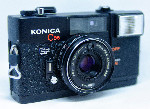
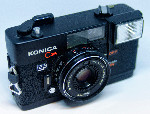

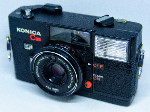

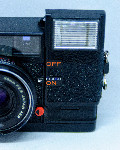

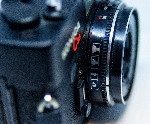












One Comment Add yours